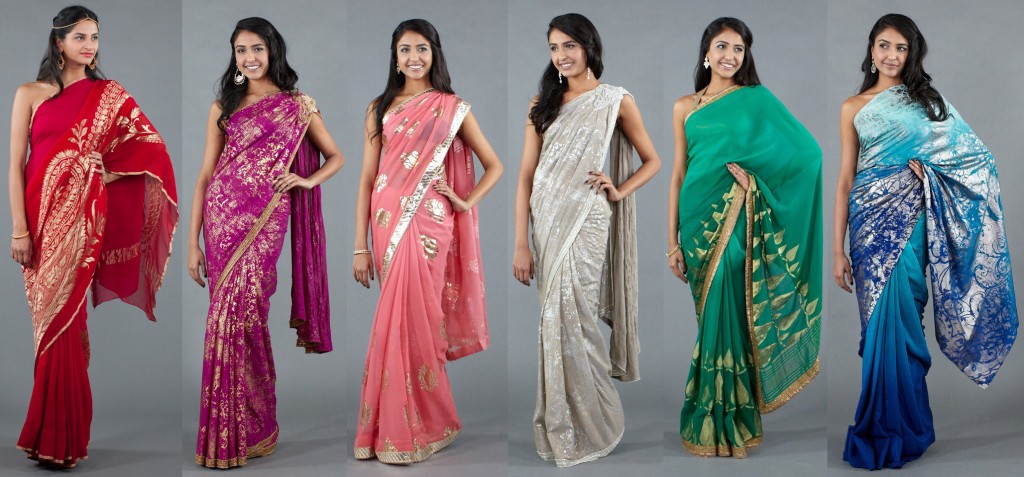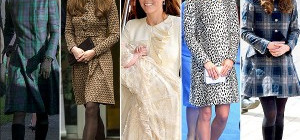 India is a well known nation for its unique fashion, costumes and culture. The costumes and jewelry in India are a by-product of variations in the traditions, religion and the cultural practices in different parts of the country. The most attractive thing about the Indian fashion is the blend of brightly colored patterns and textures as well as the cloth material of the attire. Gradually, the indo-western and western clothing is spreading and becoming a part of the regular Indian dress-up too.
India is a well known nation for its unique fashion, costumes and culture. The costumes and jewelry in India are a by-product of variations in the traditions, religion and the cultural practices in different parts of the country. The most attractive thing about the Indian fashion is the blend of brightly colored patterns and textures as well as the cloth material of the attire. Gradually, the indo-western and western clothing is spreading and becoming a part of the regular Indian dress-up too.
Indian Fashion
The fashion in India varies from region to region and the beautiful designs, lavish fabrics and patterns are hugely inspired by a place’s heritage. The most remarkable and distinguished part of the Indian fashion and clothing is the Sari, Salwar Kameez and Lehenga Cholis. The foreign cultures are also integrating parts of Indian fashion within themselves.
Saree or Sari
The primary and identical ethnic wear adorned by the Indian Women is the Sari which gives a graceful and elegant outlook to the ladies and is the quintessence of India’s culture. Sari is a 5-6 yards elegant piece of cloth which is wrapped around the body in a variety of styles with some tucks and pulls. Some of the variants are even 8-9 yards in length. It is mainly wrapped around the waist and a Pallu is draped over the woman’s shoulder in a number of different ways in various regions, each with their own unique style.
The Pallu forms the main decorative part of the costume. Along with the sari, a blouse is worn on the upper torso which comes in various designs, cuts and cloth materials. Sari comes in huge varieties in terms of embroideries, prints, fabrics as well as decorative work. A slip named petticoat is worn under the waist which holds the dress in place.
India has some globally famous sari patterns and styles such as Kanjeevaram Saree, Banarasi Saree, Cotton Handloom Saree, Printed and Plain Chiffon Saree, Cotton Printed Saree, Bandhani Saree, South-indian style saree, Rajasthani saree and Embroidered sarees according to regional designs.
Salwar Kameez
The secondary costume which is the most widely spread across the country is the Salwar Kameez which comes in a huge range of designs and is worn by all age groups of women and is quite popular with the younger group of ladies. It is quiet comfortable and thats the reason which makes it immensely spread and the most worn costume here.
The kameez is a kind of shirt which is long enough to reach the thighs or the knee levels while some are even ankle-length and the Salwar is a trouser quite similar to a pyjama style worn at the waist under the Kameez.
There are several types of salwar with different fittings, one of them is known as Churidar which is more accurately fit on the legs, thighs and pelvis as compared to the salwar. Salwar Kameez is usually accompanied by a dupatta and varies according to the regions and is named accordingly like Punjabi Suit originated in the city of Punjab, Afghani style suit, Pakistani style suit, Patiala salwar kameez as well as it is widely integrating indo-western patterns in the making and designs which provides a more sensuous and trendy look and is popular among the younger generation girls keeping them close to the indian culture along with giving them a modern outlook.
Salwar Kameez come in all types of wear and occasional makes such as Casual wear, Party Wear, Ethnic Wear, Traditional Wear, Indo-Western Suits, Short Kurta and Pants, Kurta with Churidar as well as Designer Salwar Kameez.
Lehenga Choli
One of the most ethnic and oldest traditional wear of India is the Lehenga Choli or Ghaghra Choli which is even the main wedding outfit of Northern India as well as the most popular festival and party wear and was originally worn by the tribal and Rajasthani women. But, with time Lehenga Choli has evolved amazingly in design and class and is getting popular all over the western culture as well. The lehenga or ghaghra is a a kind of skirt with many flower-like plates and is worn at the waist.
The choli is a short or long blouse worn at the upper torso and is stitched in wonderful designs. Along with the ghaghra choli a dupatta is worn around the neck or arms gracefully which is a transparent piece of cloth similar to the pattern of a veil.
Indian Jewelry
The jewellery and the accessories in India gracefully adorn and compliment the costumes.
One of the most primary feature of the Indian jewelry is the Mangal sutra, worn by the Indian married women which is a necklace worn around the neck made up of usually black, silver or gold beads and has a pendant. It is considered sacred and the symbol of a woman’s husband’s long life.
In the rural areas, a nose ring crafted ornamentally is a traditional symbol. Bangles of various bright colors made up of glass, gold, silver and various other materials is an amazing piece of Indian jewellery. Some of the ladies wear a lot of bangles reaching up to their upper arms, usually in rural areas.
The Indian bride wears almost all the Indian jewelry types including the Maang tikka, necklace, bangles, earrings, nose rings, anklets, toe rings as well as waistbands and arm bands. A bride is considered to be a symbol of indian tradition and thus she is covered in all the aspects of beauty from head to toe.
A beautiful maang tikka ( forehead tikka) is worn on the parting of the hair which is a pretty designer jewelry decorated with gemstones or beads. A string is attached to the hair which holds the maang tikka to the end of the parting on the forehead. Apart from stringed tikkas, they are also available in the form of crowns or hairbands.
Beautiful varieties of earrings, necklaces and and nose rings which are traditional as well as trendy are worn. Anklet and toe rings are a symbolic part of Indian jewelry. Anklets are designer rings worn on the anklet having hanging beads and the toe rings are worn around the toes and are available in interesting designs.
Use of colorful gemstones distinguishes the Indian jewelry according to the heritage aspect of the culture.







